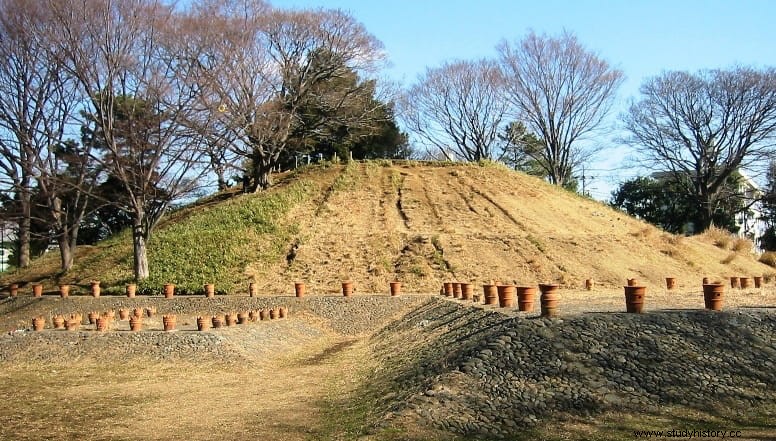A research group from the Polytechnic of Milan has analyzed the orientation of the ancient Japanese megalithic burial mounds, the so-called Kofun, built between the second half of the 3rd century and the first half of the 7th century AD. This study had never been done before, due to the large number of monuments and the fact that access to these areas is often prohibited.
Therefore, high-resolution satellite images were used. The results show that these tombs are oriented towards the arch of the rising sun, the goddess Amaterasu that the Japanese emperors linked to the mythical origin of her dynasty.
The Japanese islands are dotted with hundreds of ancient burial mounds, the largest of which are typically keyhole-shaped and called Kofun. The most imposing are attributed to the semi-legendary first emperors, while the smaller ones probably belong to court officials and members of the royal family.

Among them, the so-called Daisen Kofun is one of the largest monuments ever built on Earth:it measures 486 meters in length, 305 in width and about 36 in height. It is traditionally attributed to Emperor Nintoku, the 16th Emperor of Japan. The Daisen Kofun, located in the city of Sakai (Osaka Prefecture), belongs to a group of tombs recently inscribed on the UNESCO World Heritage List.
There are no written sources on these tombs, and excavations are few and limited to the smaller ones, as the larger ones are considered to be the tombs of the early semi-legendary emperors, and as such are strictly protected by law. The protection also extends to the outside:many monuments are fenced and it is not allowed to enter their perimeter.
For these reasons, it is impossible to obtain accurate measurements of size, height, and orientation. In addition, their number advises against any investigation on the ground. Therefore, it is natural to study them using high-resolution satellite images, which provide simple but very powerful tools for remote sensing investigations.

This is what Norma Baratta, Arianna Picotti and Giulio Magli, from the Milan Polytechnic, did with the aim of deepening their understanding of the relationship between these fascinating monuments with the landscape and, in particular, with the sky. The team measured the orientation of more than 100 Kofuns and came to interesting conclusions.
The results - which have just been published in the scientific journal Remote Sensing indicate a strong connection of the entrance halls of the kofunes with the arc of the sky in which the Sun and Moon are visible every day of the year, and show the orientation of the larger keyhole-shaped kofunes with the arc of the rising/bright Sun. In particular, Daisen's Kofun is oriented towards sunrise on the winter solstice.
The orientation of the imperial tombs towards the Sun does not occur by chance, but is in full accordance with the Japanese imperial tradition. In fact, the mythical origin of the dynasty of Japanese emperors considers them direct descendants of the Sun goddess Amaterasu.
